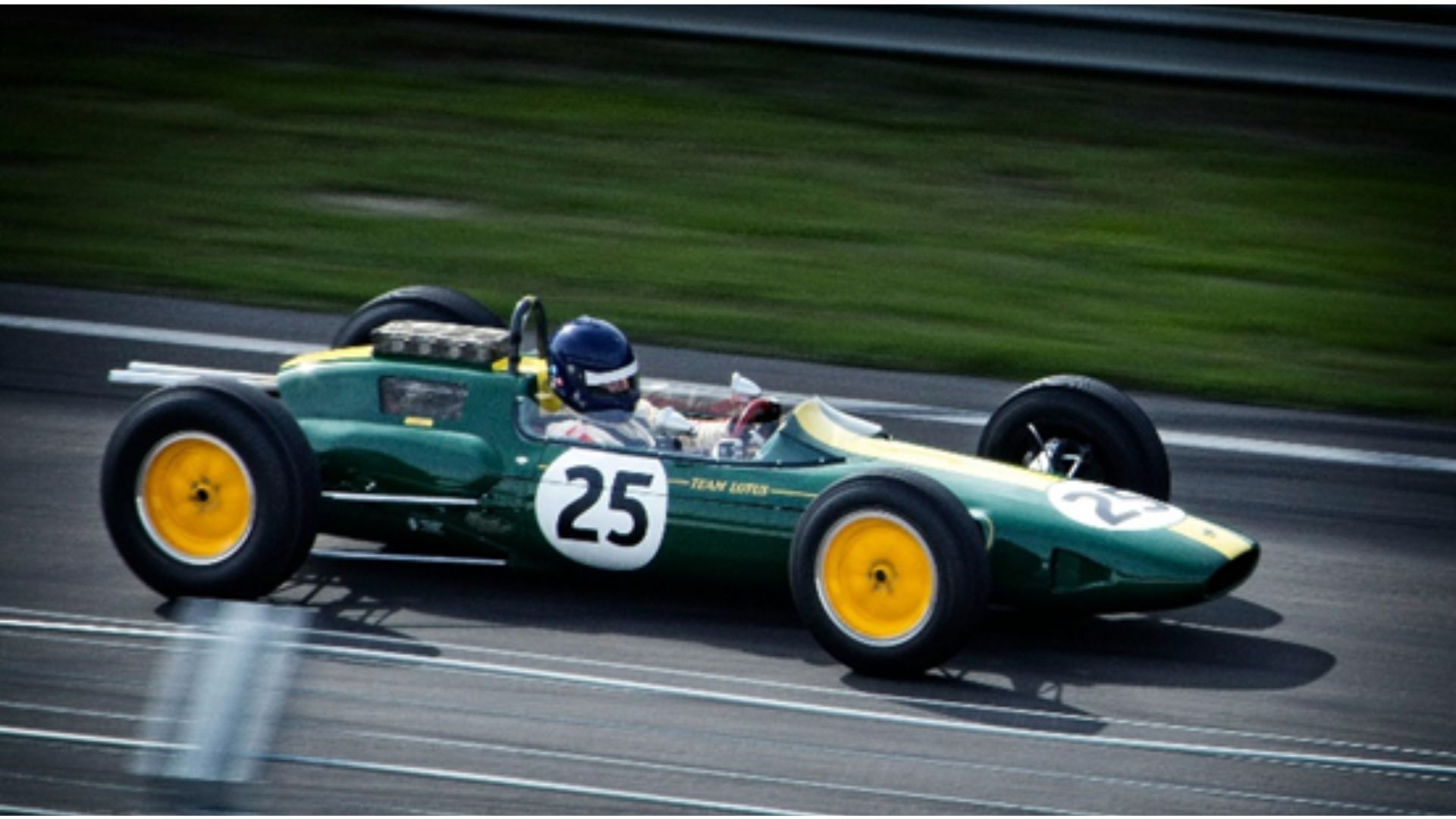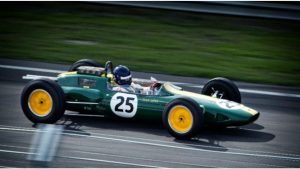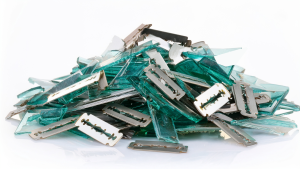Looking good at work feels great, but being safe by wearing PPE (personal protective equipment) is even better. This is especially true when dealing with something as dangerous and deadly as fire. While it may not be considered fashionable, PPE can save your skin and, in some cases, your life. But in a world full of PPE, it’s hard to know what is truly effective and what is just a money grab. If an employee needs PPE to protect them from fire, the last thing they want is gear that fails and causes them to go up in flames. Bill Simpson, the famous race car driver, was different, though – he chose to go up in flames to prove that the PPE he invented really worked.
The Rise of an Engineer
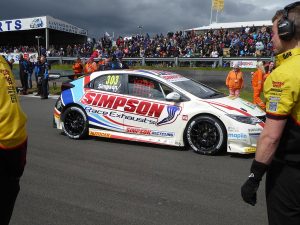
Bill Simpson was a renowned race car driver in the 1960s and 1970s. He became well known not only for his racing career but also for his pioneering work in race car safety engineering. An inventive mind, Simpson dedicated himself to improving the safety of drivers on the track. At eighteen, after breaking both of his arms in a crash, he grew determined to create devices that could reduce accidents. He rented a sewing machine to “stitch together a nylon chute,” and after several tests, successfully developed a parachute system that could attach to a race car. The chute deployed from the rear, creating wind resistance to slow the car and prevent crashes. This early invention showcased Simpson’s engineering talent and innovative spirit. As his career progressed, he continued studying the various dangers race car drivers faced — crashes, fires, and head injuries — and devoted himself to designing equipment to prevent injuries and save lives.
Setting Oneself on Fire
In the early days of racing, one of the biggest dangers was cars exploding after crashes. The main fire hazards came from fuel leaks, ruptured tanks, and magnesium components. Explosions were frequent, and drivers often suffered severe burns.
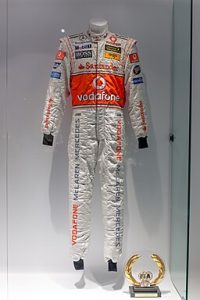
A turning point came in 1959 when Jerry Unser, a well-known race car driver, tragically died after a fiery crash. His death underscored the urgent need for improved safety standards and fire-resistant gear in motorsports. This event, among others, accelerated the development and adoption of specialized PPE for drivers. It was this danger that drove Simpson to take action—he began designing a fireproof racing suit made from Nomex®, a flame-resistant material, capable of protecting drivers from the infernos that followed high-speed wrecks. In a bold demonstration of its effectiveness, Simpson famously set himself on fire in a highly publicized demonstration captured by news cameras. The stunt was more than a spectacle—it was a masterstroke in marketing that showcased his unshakable confidence in his engineering.
In many jobs, there is always some risk of injury or even death, and in racing, the danger of accidents is high, including the risk of fire that can engulf the driver. With risks this serious, wearing a fireproof suit is vital. Simpson knew of the risks, which is why he stepped away from driving early in his career and instead focused on the engineering aspect that saved many lives. Today, the entire outfit does not even look like traditional PPE but rather resembles a suit covered in advertisements.
Consequential PPE
Before the invention of safety PPE like fire-resistant suits, drivers raced in little more than street clothes—leather caps, cotton shirts, and trousers that offered no real protection against fire or impact. Bill was determined to change the culture of risk by creating protective gear that set a new standard for driver safety.
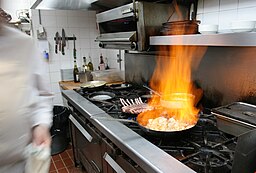
PPE plays a critical role in far more industries than just racing: from construction to food service. Restaurant workers in particular rely on PPE to stay safe on the job. Without it, they are exposed to a range of workplace hazards. Interestingly, race car drivers and restaurant workers often rely on similar burn-protection equipment, including fire-resistant clothing and gloves. No matter the profession, PPE exists to protect individuals from preventable injuries and sometimes, even save lives.
Another major hazard in kitchens continues to be slippery floors. While often attributed to spilled liquids, dry substances, and debris, floors can often become slippery because of oil residue from fryers. OSHA (Occupational Safety and Health Administration) recommends non-slip shoes as PPE to help protect employees from slip and fall hazards.
In Summary

PPE continues to evolve through innovation. Thanks to continuous improvements, restaurant workers, like race car drivers, are better protected against common workplace injuries. Whether you are a race car driver speeding through the track or a restaurant worker handling hot oil and water, PPE is essential for staying safe. After all, PPE is designed with one purpose: to safeguard employees from harm. When PPE is used correctly and consistently, it significantly reduces the risk of injury and helps create a safer working environment for everyone involved.
The racing world owes Bill Simpson for several life-saving inventions. That same commitment to safety drives CrewSafe as a leader in workplace protection solutions. CrewSafe provides employee safety awareness training materials – including our October 2025 PPE poster and lesson guide – as well as high-performing protective gear, helping organizations create safer, smarter workplaces where every worker can return home unharmed.
Sources
- SAE International. Automotive Collision Fires
https://legacy.sae.org/publications/technical-papers/content/741180/ - Anna Duxbury. History of Safety Devices in Formula 1. History of safety devices in Formula 1: The halo, barriers & more
- Indy Speedway. The Indianapolis Motor Speedway. Indianapolis Motor Speedway Deaths 1959 – Jerry Unser, Bob Cortner
- Marshall Pruett. How Bill Simpson Changed Motorsports Safety Forever. How Bill Simpson Changed Motorsports Safety Forever
- OSHA. Young Worker Safety in Restaurants eTool. eTool : Young Worker Safety in Restaurants – Cooking | Occupational Safety and Health Administration
- Smith, Steven Cole. Bill Simpson: A Life Dedicated To Racing And Racing Safety. Bill Simpson: A Life Dedicated to Racing and Racing Safety
- Work Wear Solutions. What are the dangers of not wearing safety gear at work? What are the dangers of not wearing safety gear at work? – Custom Workwear Manufacturer

